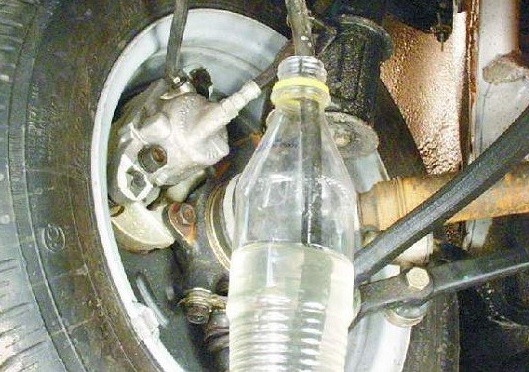
Pumping of brakes is a procedure that should be carried out periodically for any car. It is necessary to pump the brakes (that is, to remove the air from the system) in the following cases: if the repair of components of the braking system (e.g. replacement of GTZ, brake tuning, etc.) has been performed, if the brake system's tightness (s) has been compromised (any tubes or tubes have been damaged) if the brake fluid has been replaced when the brakes are unusually slow (for example, the brake pedal or the vehicle's brakes have become less effective).
- if the components of the braking system have been repaired (e.g. replacement of GTZ, brake tuning, etc.),
- if the braking system has been compromised (any tubes or hoses have been damaged),
- if the brake fluid has been replaced,
- if the brakes of the car have become unusual (for example, the working brake pedal or the vehicle's brakes have become less effective).
Pumping the brake system is not a very complicated procedure, so it does not need to be addressed in the service. You can pump the brakes with your hands. It is more convenient to do this with an assistant, but this procedure can be done entirely on its own. Procedure for Pumping of Brake Mechanisms
- Check the brake fluid level in the expansion bar if it is not enough to reach the MAX level.
- Find and remove a blank filler that will wear a hose to wear the brakes. The free end of the hose must be lowered into capacity.
- After the hose has been placed over the machine, the assistant needs to push the brake 3-4 times and then leave the pedal in the pressed state.
- Slightly unscrew the connection and wait for the brake fluid to flow out. As soon as the system begins to air, you can determine that bubble in the brake fluid.
- Spell it out.
- To set the procedure for the rest of the wheels in a predetermined order.
- When all the wheels are finished, check the brake fluid level again and reach the MAX level.
To pump the brakes on your own, without an assistant.
- Report to the maximum brake fluid.
- Press the brake pedal until the end of the brake and then press the brake or bar to lock it.
- After this, the pumping procedure is no different from Pumping with the assistant. Notice that the brake pedal is pressed 3-4 times and then fixed before rolling each wheel.
There is another way to pump the brakes itself (without an assistant)-you will need a syringe and a cap of brake fluid identical to yours. Remove the brake fluid into the syringe, and then hermetically lock it in the lid (the best use of the sealant).To spin off the pump, frame it to collect the resulting brake fluid. Then click on the piston of the syringe and inject it into the brake system. The brake fluid with the air bubbles coming out through the plaster.
- Remove the brake fluid into the syringe, and then hermetically lock it in the lid (the best use of the sealant).
- Spun the pump shall be fitted with a capacity for collecting the associated brake fluid.
- Then click on the piston of the syringe and inject the liquid from it into the brake system. The brake fluid with the air bubbles coming out through the plaster.







